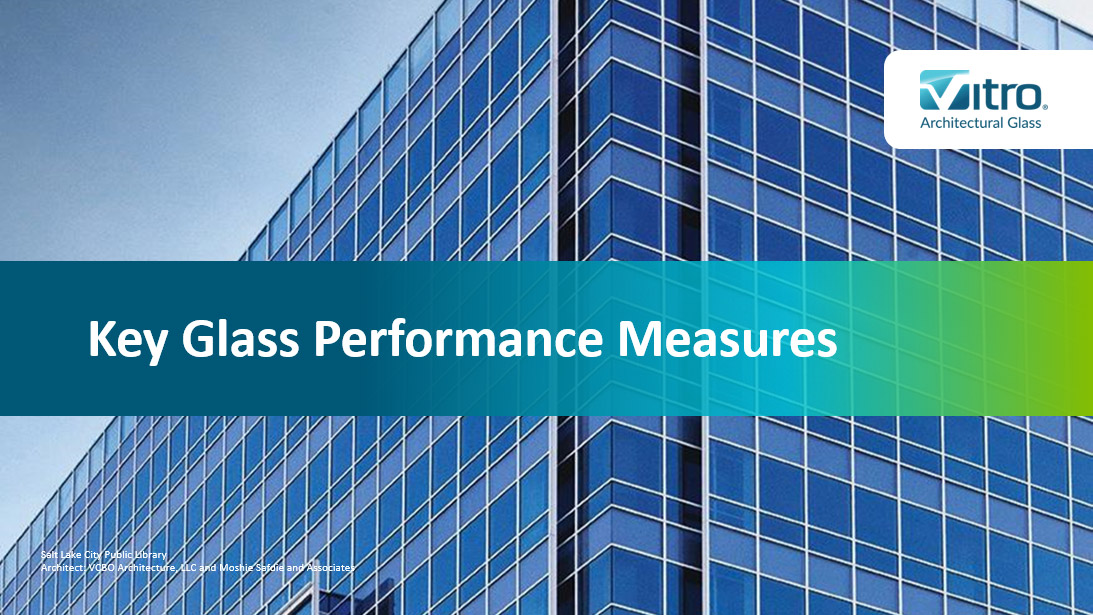Understanding glass performance begins by understanding some key glass performance terms. Generally, the following four terms are considered very important when it comes to evaluating glass performance:
- Visible Light Transmittance (VLT)
- Solar Heat Gain Coefficient (SHGC)
- Light to Solar Gain Ratio (LSG)
- U-Value, in both Winter and Summer
Visible Light Transmittance (VLT)
Visible light transmittance (VLT) is a percentage of the visible portion of the solar energy spectrum coming through the glass. It is expressed as a figure between 0 (no light) and 100 (all light). This value measures the ability of the glass to transmit light and facilitate daylighting.
Solar Heat Gain Coefficient (SHGC)
Solar heat gain coefficient (SHGC) is the fraction of incident solar radiation admitted through a window, both directly transmitted and absorbed and subsequently released inward. SHGC is defined as a number between 0 and 1 and is always expressed as a decimal. The lower a window’s solar heat gain coefficient, the less solar heat it transmits. Zero represents an impenetrable wall against solar heat and.1 represents direct exposure to the sun’s heat. For example, a glass with a SHGC of 0.27 allows 27% of the sun’s solar heat to pass through, meaning it blocks 73%.
Light to Solar Gain (LSG)
Light to Solar Gain (LSG) is a ratio that results from a window’s SHGC being divided by its VLT rating. The LSG ratio measures the glass's ability to transmit light and block heat in the form of infrared energy. The higher the LSG, the brighter the room is without adding excessive amounts of heat.
U-Value
U-value is a rating given to a window based on how much heat loss it allows. U-factors generally range from 0 (very little heat loss) to 1.0 (high heat loss).
Specifically, Winter Nighttime U-Value measures the environmental conditions of a cold outside temperature and no sunlight, whereas Summer U-Value measures the conditions of a warm outside temperature and sunlight. A lower Summer U-Value means that the glass is better at blocking re-radiated heat, increasing the efficiency of air conditioning systems.
To see visual representations of these four performance measures, click through the slideshow below:
For additional information about designing with Vitro Architectural Glass, please visit vitroglazings.com/products. For any other glass questions, please contact Vitro Glass or call 1-855-VTRO-GLS (1-855-887-6457).
Updated on October 10, 2024





